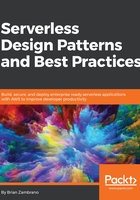
What is serverless computing?
Let's start with the simpler of the two questions first—what is serverless computing? While there may be several ways to define serverless computing, or perhaps more accurately serverless architectures, most people can agree on a few key attributes. Serverless computing platforms share the following features:
- No operating systems to configure or manage
- Pay-per-invocation billing model
- Ability to automatically scale with usage
- Built-in availability and fault tolerance
While there are other attributes that come with serverless platforms, they all share these common traits. Additionally, there are other serverless systems that provide functionality other than general computing power. Examples of these are DynamoDB, Kinesis, and Simple Queue Service, all of which fall under the Amazon Web Services (AWS) umbrella. Even though these systems are not pay-per-invocation, they fall into the serverless category since the management of the underlying systems is delegated to the AWS team, scaling is a matter of changing a few settings, fault-tolerance is built-in, and high availability is handled automatically.